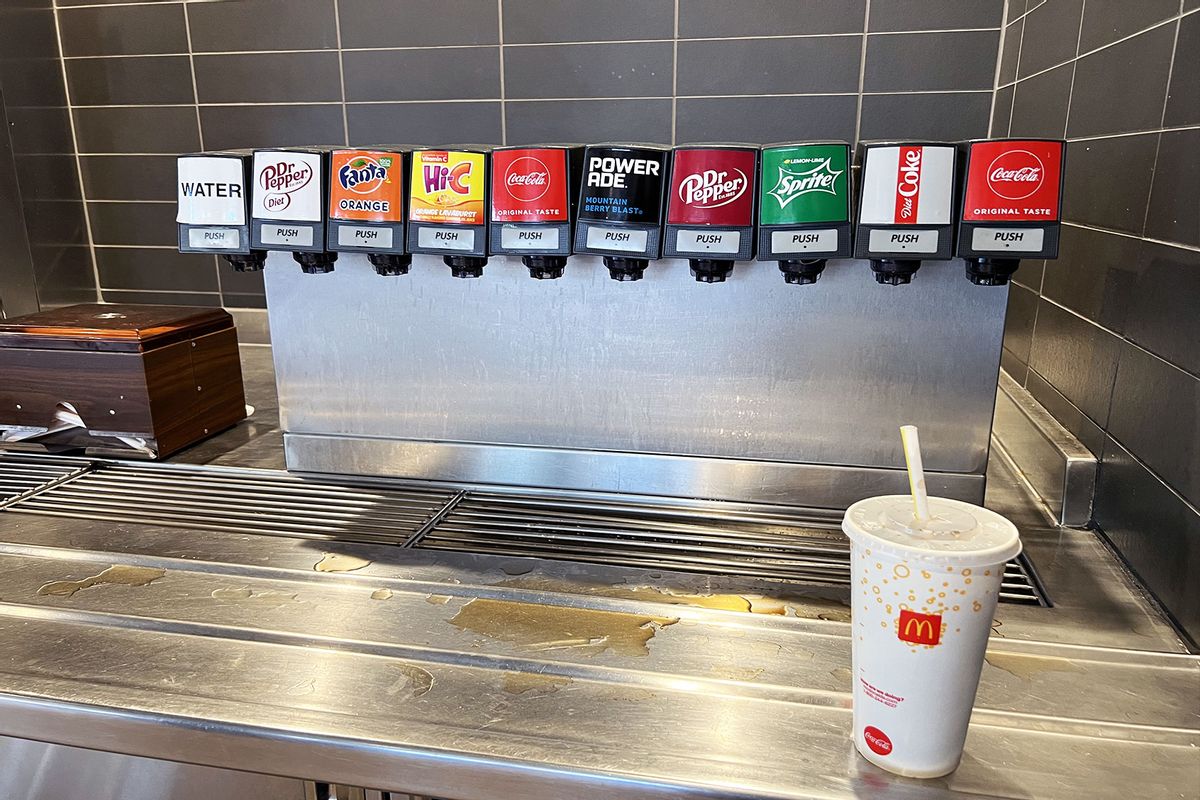Bob Wright, the chief executive officer of the Chicago-based sandwich chain Potbelly, said in a May earnings call that customers are “managing their wallets” a little more closely, which means eating out less frequently. “They’re pulling back ever so slightly and probably from a lot of places,” Wright said. “We’re competing with all other restaurants, and we’re competing with the refrigerator.”
He continued: “And when people’s entire food budget is under pressure, what they don’t want to do is start compromising on their meal choices.”
As a response to this increasingly competitive environment — where fast-casual, sit-down and drive-thru restaurants are all feeling the pressure — we’re starting to see fast-food companies attempt to woo wayward customers in a variety of ways.
Some, like Subway, have tried to communicate to potential diners that the quality of their product has improved; last year, the chain began the process of adding deli slicers to each of their locations so that sandwiches would be made with freshly-sliced meat (this didn’t necessarily have the fiscal impact Subway leaders likely hoped it would, which may explain their more recent pivot to footlong cookies, which one critic said tasted like a “moist, floppy sleeping bag of flour and oil”). Other companies have opted to reintroduce value meals and special promotions as chains like Chili’s and Applebee’s are attempting to lure diners with cheaper options.
However, while fast-food chains are eager to get more customers, it doesn’t seem like there is a ton of industry-wide focus on getting those customers to actually come inside their restaurants. For instance, a few months ago, McDonald’s announced it would start getting rid of self-serve drink stations, and as a result, free refills —and now some customers have started noticing the in-store perk is indeed disappearing from locations across the country.
In response, some McDonald’s diehards have taken to social media to express their discontent. “Fast-food is ending right in front of our eyes,” one user on X wrote in response to the decision. Yet if the fast-food dining room is dying, customer behavior is at least partially to blame.
The issue of self-service soda machines, which were first introduced by McDonald’s in 2004, is a perfect example of how diners’ habits have changed at restaurants since the beginning of the pandemic.
In 2023, several franchise owners in Illinois who had already ditched the soda stations said food safety, theft prevention and a lack of dine-in customers impacted the decision. “It’s an evolution towards convenience and [the result of] the growth of digital service,” Mikel Petro, who operates 15 McDonald’s throughout central Illinois with his wife and in-laws, told the State Journal-Register.
Consumer behavior changed during the pandemic — resulting in an increase in digital, delivery and drive-thru orders — and, per CNN, McDonald’s is shifting to accommodate that new reality. The chain has also since launched a concept called “CosMc’s,” small-format locations with reduced dining rooms. According to McDonald’s CEO Chris Kempczinski, that development “opens up for us a whole bunch of development opportunities for us to go after.”
McDonald’s isn’t the only fast-food company to consider ditching, or simply adapting, their dining rooms as a response to the significant decrease in customer food traffic. As Salon Food reported last year, a ton of chains, including Taco Bell and Wendy’s, have undergone sleek, eerily homogenous renovations that seem to prioritize efficiency over the semblance of human touch.
“To accelerate our business and expand our footprint across the globe, we must consistently meet the needs of our customers however they choose to engage with Wendy’s, whether that’s through a digital platform or in the drive-thru,” Wendy’s CEO Todd Penegor said in a press release last year after it was announced the company was planning a massive redesign of their restaurants.
In the case of McDonald’s, the company has been working towards a digital-focused dining room for some time now. In 2018, the company announced a $6 billion plan to overhaul most of its 14,000 U.S. restaurants by 2020. The makeover included new furniture and decor, remodeled counters for table service and “refreshed” exterior designs.
The fast-food chain also shared plans to install digital kiosks for ordering, customizing and paying for meals, as well as easier-to-read digital menu boards in restaurants and drive-through lanes. Additionally, they planned designated parking spots for customers who order food through the chain’s mobile app. Now, six years later, diners across the country who visit a McDonald’s location will likely notice these augmentations.
Partnered with the fast-food industry’s growing prioritization of app users — as of February 2024, McDonald’s has more than 150 million app users who have logged in within the last 90 days — it makes sense that some of the dining-in amenities, like self-serve refills, would fall by the wayside. For those who still prefer the dining room experience, signs on McDonald’s soda stations are instructing customers to “please visit the front counter for a refill.”
Read more
about this topic
